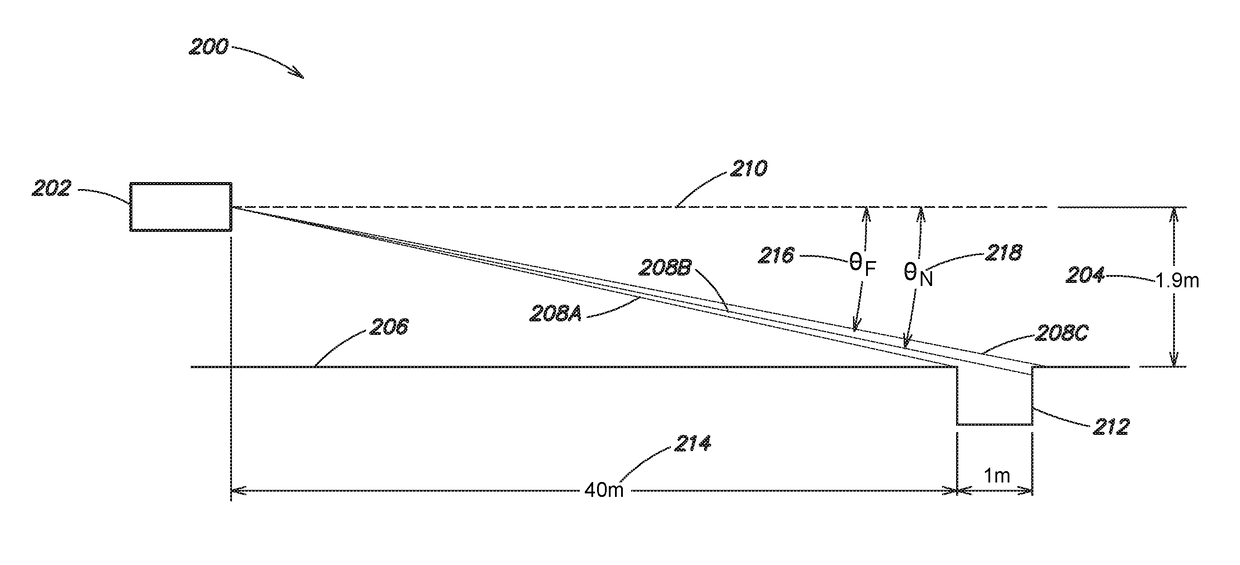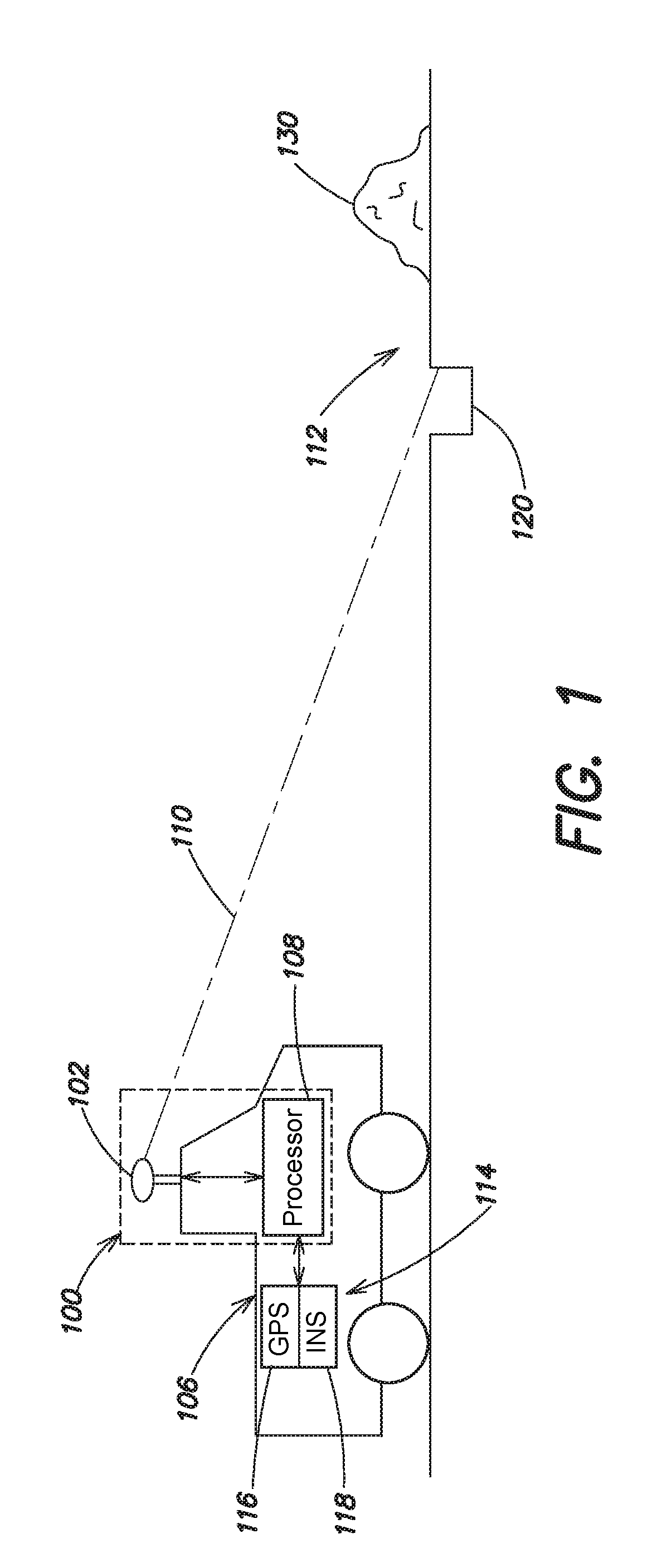Negative obstacle detector
a detector and negative technology, applied in the field of negative obstacle detectors, can solve the problems of difficult detection of an absence in a pathway (e.g., a hole), exacerbate the problems of conventional systems, and many cannot detect small negative obstacles, so as to achieve high precision and increase the scan time. , the effect of high precision
- Summary
- Abstract
- Description
- Claims
- Application Information
AI Technical Summary
Benefits of technology
Problems solved by technology
Method used
Image
Examples
Embodiment Construction
[0031]Aspects and embodiments are directed to a detector that may be mounted on a vehicle to enable autonomous operation of the vehicle. In some examples, the detector can be mounted on manned vehicles and provide assistance (e.g., collision avoidance, object avoidance, etc.) to human drivers. Autonomous vehicle as used herein is intended to include completely autonomous vehicles as well as vehicles with human operators, where driving operation can be assisted or taken over by computer systems.
[0032]As discussed in more detail below, embodiments of the detector include a laser scanner device, such as a laser range finder, which may include or be based on a solid-state liquid crystal waveguide, that steers a laser beam from the range finder transmitter to target high priority areas in front of the autonomous vehicle and a detector that provides range to the area illuminated by the laser beam. Discontinuities in the range information can be used to identify obstacles which allow the a...
PUM
 Login to View More
Login to View More Abstract
Description
Claims
Application Information
 Login to View More
Login to View More - R&D
- Intellectual Property
- Life Sciences
- Materials
- Tech Scout
- Unparalleled Data Quality
- Higher Quality Content
- 60% Fewer Hallucinations
Browse by: Latest US Patents, China's latest patents, Technical Efficacy Thesaurus, Application Domain, Technology Topic, Popular Technical Reports.
© 2025 PatSnap. All rights reserved.Legal|Privacy policy|Modern Slavery Act Transparency Statement|Sitemap|About US| Contact US: help@patsnap.com



